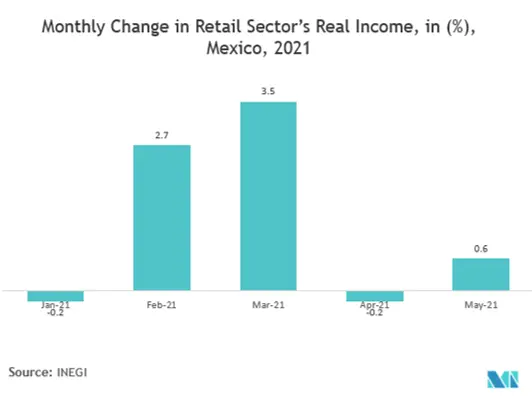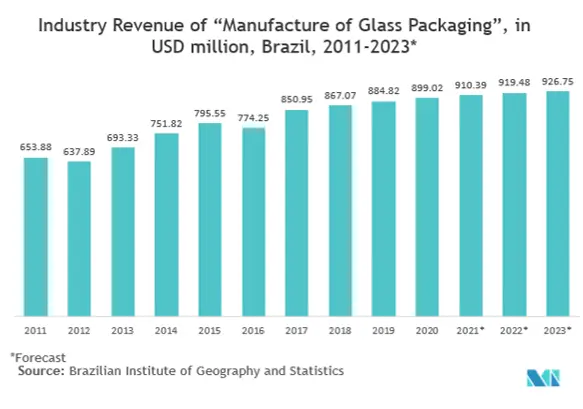Market Trends of LA Frozen Food Packaging Industry
This section covers the major market trends shaping the Latin America Frozen Food Packaging Market according to our research experts:
Increase in disposable income and changing consumer behavior
- Various factors, such as changing lifestyle, increasing disposable income, and rapid urbanization in developing countries, especially the growing middle-income population, are increasing the demand for bags for frozen food. The increase in population density has increased demand for packaged food in general, with Millenials contributing to the growth.
- After packaging, it takes time for packaged food to reach consumers across various parts of the world. The packaged food may not be fresh and might lose its aroma and taste before reaching the consumer. The threat of food being spoilt before reaching the consumer is increasing, as it would result in a loss of the capital invested in the packaging.
- To overcome this, food processing industries are investing in technologies and various new packaging techniques, such as intelligent packaging and engineering science, which help in increasing the shelf life of the product. This is the reason for the increased demand for frozen food in the industry. Organizations are focusing on consumer satisfaction, apart from revenues, as it impacts the image and value in the market.
- Millennial customers generally drive the demand for frozen food packaging products, and millennials account for 30% of the total Latin American population. These people have an ardent preference for single-serving and on-the-go style food and beverage foodstuffs. As these products are usually designed to be durable, portable, and lightweight, flexible packaging is a famous option for packing such products
- The increase in frozen food is also due to the increased convenience of retail stores in the region. The demand from retailers has increased significantly in the past few years.
- These products are generally designed to be portable, durable, and lightweight; frozen food packaging stands to be a famous option to pack such products. The increasing demand for snack foods, both in terms of processed foods and fresh items, is expected to govern the demand.

Glass Packaging to Drive the Market
- Glass is the preferred packaging material for consumers who are concerned about their health and the environment. It is made from all-natural sustainable raw materials. Glass packaging preserves the product's taste or flavor and maintains the integrity or healthiness of frozen food.
- Glass is one of the most preferred materials for packaging frozen food. Properties like excellent barrier properties, sterility, and reusability make it a superior packaging material. The other major advantage of glass packaging is that it can be molded into various shapes and sizes, facilitating its use across different industry verticals.
- Even though glass remains the preferred packaging material for a variety of products, the growing usage of plastics as a replacement for glass will hamper the market growth. Advancements in plastics for safe usage in different applications will restrict glass as a material for packaging.
- Due to Covid-19. Some of the effects of lockdown include supply chain disruptions, lack of availability of raw materials used in the manufacturing process, labor shortages, fluctuating prices that could cause the production of the final product to inflate and go beyond budget, shipping problems etc.


